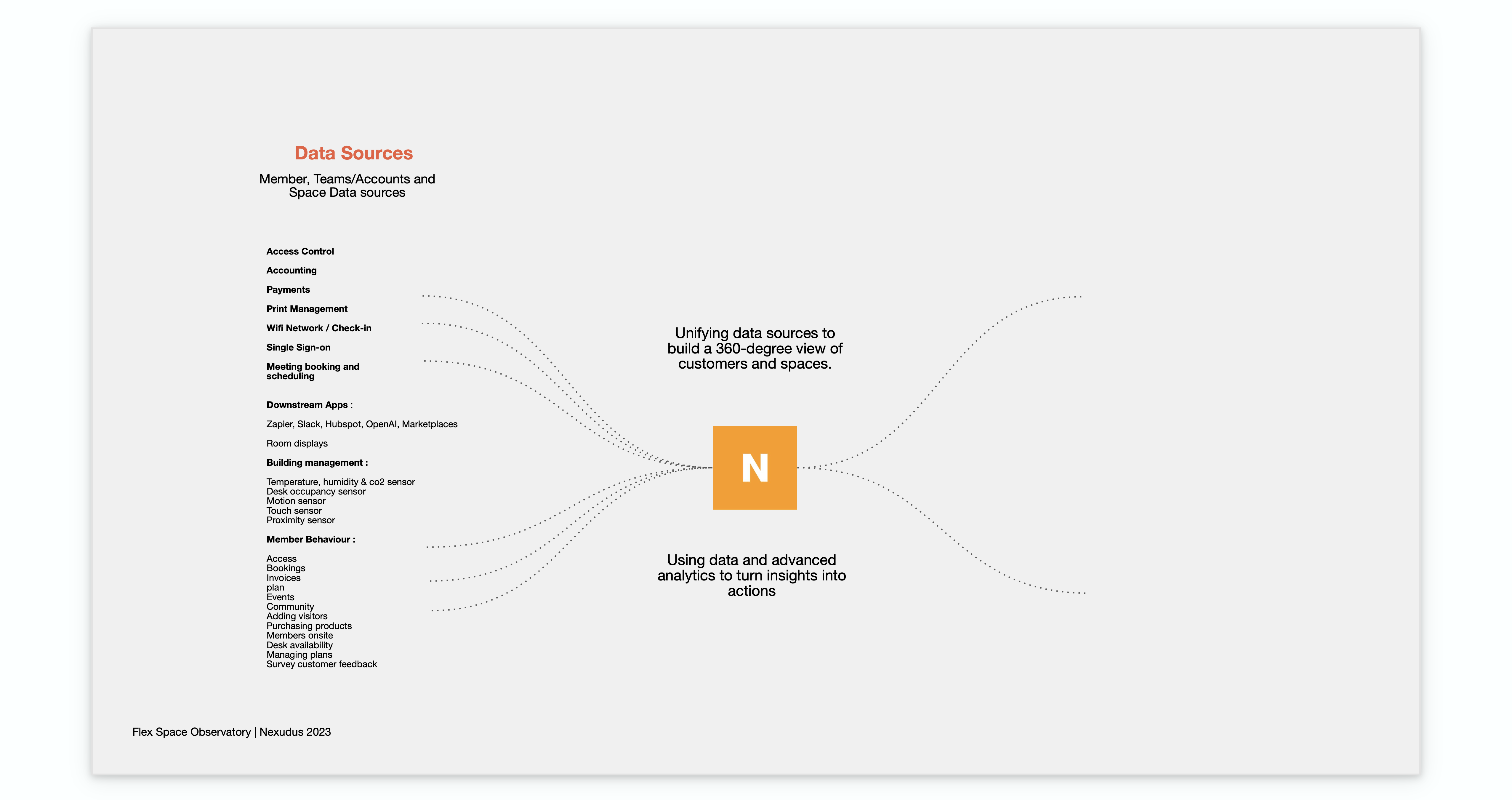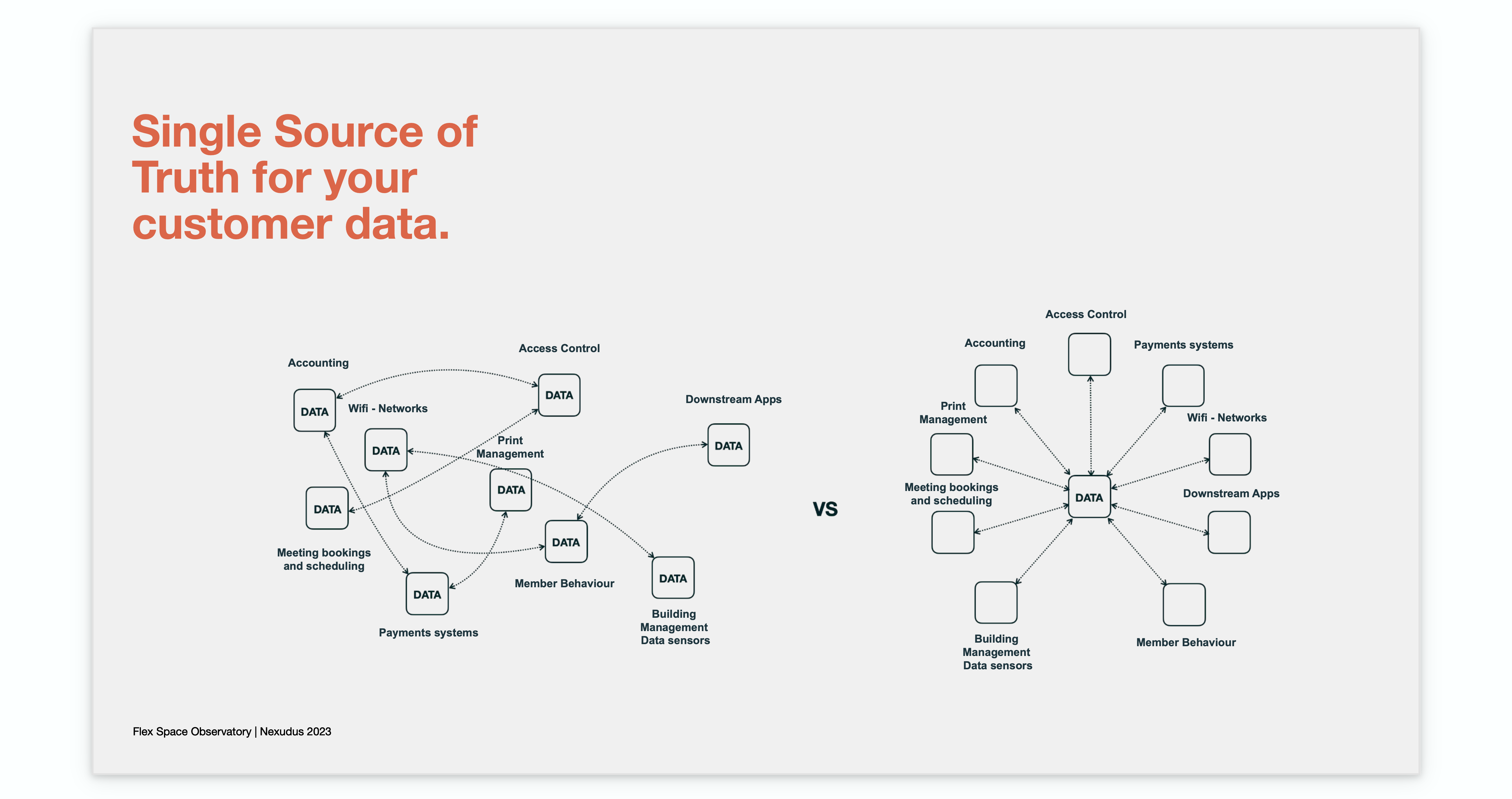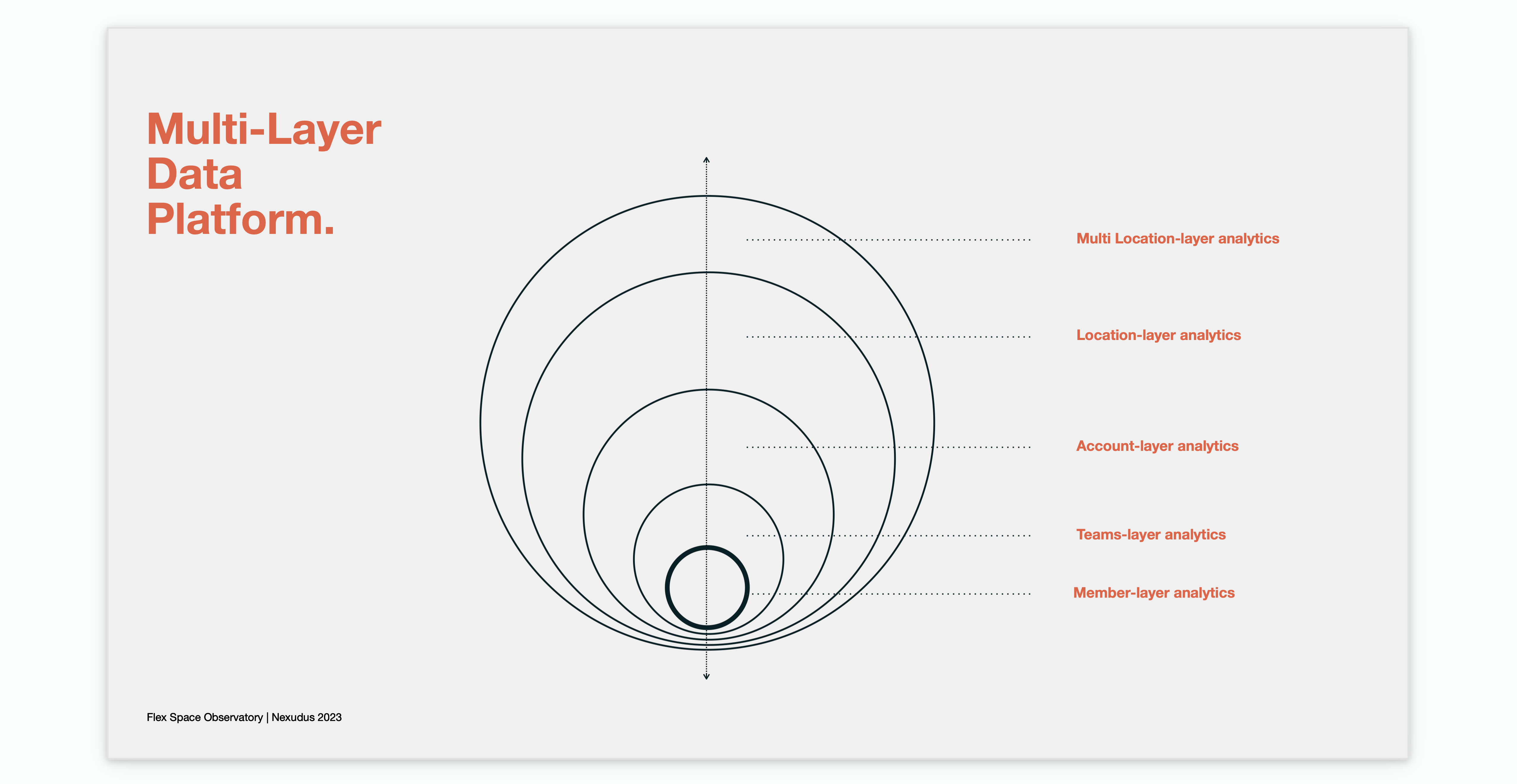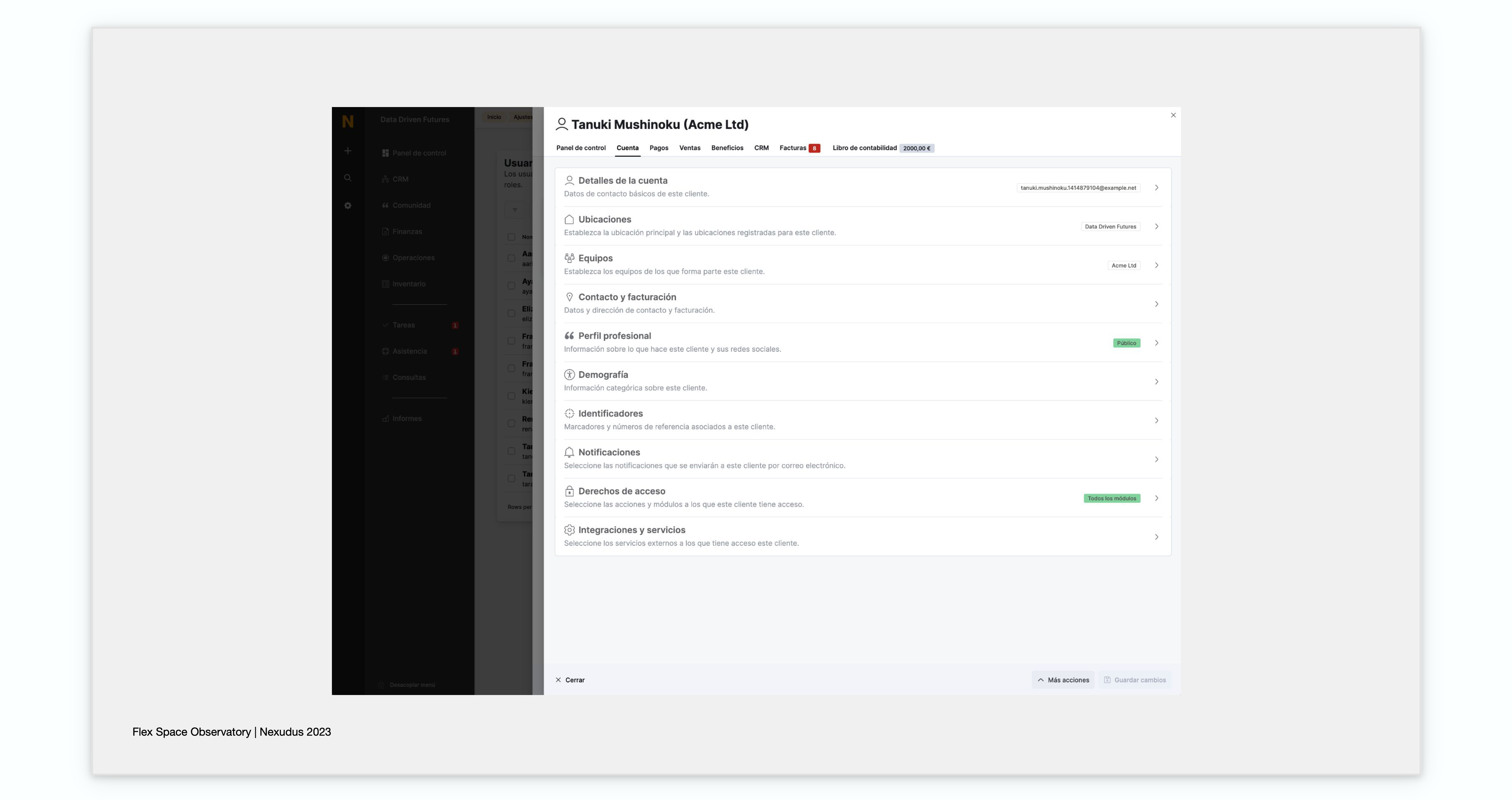The Coworking and Flex Space Data Maturity Journey: Phase 1 - Building a 360-degree view.
In our first article, we emphasised the importance of embarking on a Data Maturity Journey, a valuable tool for coworking and flex workspace operators to assess the challenges in harnessing the power of data as a key driver to transform your business.
In today's coworking and flex workspace landscape, spaces are constantly struggling to leverage data to gain a competitive advantage. Embarking on the path to data maturity is a crucial undertaking that can transform how companies operate and make strategic data-informed decisions. The initial phase, critical to the journey's success, focuses on consolidating and unifying data sources to establish a robust foundation for forthcoming data initiatives.
In this article, we focus on the first phase of the Data Maturity Journey: The integration and unification of multiple data sources to build a comprehensive 360-degree perspective on both customers and space.
The Importance of Data Maturity refers to an organisation's ability to effectively gather, unify, monitor and analyse data, as well as run predictive models to derive actionable outcomes. It is a journey that includes three phases, with each one building on the previous to unlock greater data capabilities and business outcomes.
One of the primary obstacles faced by coworking and flex workspaces is the fragmentation of data sources. These businesses rely on a multitude of technologies, including web platforms, CRM systems, email marketing tools, building management operations, booking platforms, and billing tools. Whilst these tools are essential for various functions, they often store data in isolated silos, leading to disjointed and incomplete customer views.
The disjointed data makes it difficult to answer even the most basic questions about customers, their journeys, and space utilisation. Moreover, it impedes the development of advanced analytics models and actionable outcomes in later phases of the data maturity journey.
To illustrate how difficult it is to answer basic questions with disjointed data, consider a scenario where a customer initially interacts with your website, signs up for a plan of your coworking space, physically accesses the space, books a meeting room, and later provides feedback on their experience. Without a unified view of this customer journey, these various data types will be dispersed across separate data systems, hindering your ability to achieve a comprehensive 360° understanding of your customer. Having such a profound understanding of the customer journey is crucial for optimising both your services and the overall customer experience.
To address these challenges of understanding the customer journey, companies often resort to deploying development resources for point-to-point integrations between different SaaS (Software-as-a-Service) tools and building management systems. Such a complex system of integrations leads to inefficiencies, increases the risk of data errors, and consumes valuable staff time. Therefore, team members may find themselves exporting data from various sources into CSV files, aggregating the information, and updating graphs manually.
At the heart of the first phase is the creation of a Unified Data Layer that addresses fundamental data challenges which companies must tackle before progressing to more advanced phases. This data layer aims to eliminate data silos and provide a single, unified source of truth, thereby enabling a comprehensive 360-degree view of customers and spaces.
In the initial phase of the Data Maturity Journey, Nexudus provides a comprehensive solution for addressing these main challenges:

1. Single Source of Truth for Your Customer Data.
The creation of a Unified Data Layer establishes a single source of truth for customer and space data. This consolidation enables organisations to integrate data from different sources seamlessly, providing a holistic 360° view of customers and overall space utilisation.
Within Nexudus, there's a wide range of data sources that you can integrate, making this single source of truth possible. These sources include access control technologies, accounting, payment systems, print management, Wi-Fi networks, community interactions, meeting room bookings, building management data, visitor management data, marketplaces, downstream apps like Zapier, Slack, Hubspot, as well as Nexudus-specific apps and sensor data integrations.
2. Eliminating Point-to-Point Integrations.
Once you have all your data unified in this single source of truth, you'll no longer need to set up those complex and often cumbersome point-to-point integrations. This is great news because it simplifies data management, reducing the chances of errors and enhancing the consistency of your data. Your data becomes more reliable, and your team can save time and effort previously spent managing these integrations.
3. Multi-Layer Data Platform.
A multi-layer data platform is a system designed to collect data at various layers of granularity. It offers a valuable resource for conducting more complex analyses, which can provide a deeper understanding of behavioural space usage, demographic and firmographic data.
At this stage, where you're establishing a comprehensive understanding of your customers - three primary types of data serve as the foundation: Behavioral data, User Profile data and Space data.
a. Behavioural Data: This type of data offers insights into how your customers engage with your space and services. It captures their interactions and behaviours. Some key elements of behavioural data include purchase history, browsing behaviour, bookings, space interaction, feedback and reviews, customer support interactions and more. Behavioural data is dynamic and can change over time as customer preferences and habits evolve. It is invaluable for personalisation, targeting, and to gain a deeper understanding of the customer journey.
b. User Profiles: User profiles encompass demographic (age, gender, education, etc) and firmographic data (company industry, size, revenue, role, etc), which help categorise and segment customers.
c. Space Data: This type of data offers valuable insights into the behaviour of your space. With these sensors in place, your flex space can effectively monitor temperature, humidity, and CO2 levels, while also tracking occupancy and motion data for desks and meeting rooms.

Nexudus can aggregate these types of data through varying levels of granularity:
Member-layer analytics.
At the most granular layer, member-layer analytics delve into individual user behaviour and preferences. This layer of analysis allows you to understand how specific members interact with your space and the resources they frequently utilise.
Account/Team-layer analytics.
Moving up a layer, account or team-layer analytics focus on groups of members who are associated with specific accounts. This layer of analysis provides insights into how different accounts within your organization utilise your space.
Location-layer analytics.
Insights at the location layer enable you to enhance workspace efficiency and make informed decisions about resource allocation, floor occupation, and environmental management.
Multi-location-layer analytics.
The highest layer of analysis encompasses multi-location-layer analytics, which involves examining the collective data from all your workspace locations. This comprehensive view allows you to identify trends that might not be evident when looking at individual locations in isolation.
By integrating these different layers of analysis within a multi-layer data platform, you gain a comprehensive view of your business, members, and spaces. This approach empowers you to make data-informed decisions that can enhance member experiences and optimise resource allocation and space performance (environmental & revenue generation).

A unified data view from a customer within the Nexudus Platform (A UI image with dummy data).
4. Collecting & Building a Holistic Customer Journey.
It involves having a unified perspective of your customer's interactions with your business at various stages of their journey.
When you collect and unify data from different stages of the customer journey, you gain a comprehensive understanding of how customers engage with your business from their initial touchpoints to their ongoing interactions. This allows you to see the full picture of their experiences, preferences, and pain points. For example, if a customer visits your website, interacts with your social media, books a meeting room, and provides feedback, you can connect these dots. This enables you to offer a consistent and tailored experience at every touchpoint, enhancing customer satisfaction and loyalty.
In the next article, we will explore the second phase of the Data Maturity Journey: The transition from relying on intuition to embracing data-driven decision-making. We'll discuss how Data and AI can be harnessed to maximize space performance and elevate the member experience. We'll also describe different use cases developed within the Nexudus Platform and designed to equip your workspace with advanced data capabilities and predictive analytics.
Continue along with us on this transformational journey, and let Nexudus be your guide as we unlock the potential of data in the Coworking and Flexible Workspace landscape.
We hope you have found the second article in this series useful, and have been able to apply some of the learnings to your own space! Let us know which phase of the Data Maturity Journey is your company in and don’t forget to visit Flexspace Observatory for your latest industry insights and reports.
Related posts
-
Why a CRM is Essential for Coworking Spaces (And How to Choose the Best One)
A customer relationship management platform (CRM for short) is what organisations use to manage relationships and interactions with both existing and potential customers. Its primary function is to streamline operations and communications to ensure a smooth customer - and employee - experience, while improving profitability.
-
How the Right Coworking Software Can Transform Your Coworking Space
We all know that technology solutions are imperative to the day-to-day running of your coworking space, but the right coworking software can take it to the next level. It has the power to transform your coworking space into a highly profitable business, all while building a vibrant and engaged community. Let’s explore how the right tools can transform your coworking space.
-
New in Nexudus: Reduce no-shows & improve team bookings in your coworking space.
Meeting rooms are at the heart of collaboration in coworking spaces. Whether it's a brainstorming session, a client meeting, or a team catch-up, having a simple and efficient way to book and manage meeting rooms makes all the difference. But let’s be honest—there’s always room to improve the experience for your members.
-
Unlock New Revenue Streams with Our New Virtual Offices Module
The popularity of remote and hybrid working has prompted many organisations to rethink the way they utilise office space. Many have swapped their large, static HQs for more flexible satellite solutions that can accommodate a disparate workforce.
-
ViDA Compliance Guide: 8 Essential Steps for Coworking Spaces in the EU
Now that 2025 has arrived, the European Union's VAT in the Digital Age (ViDA) initiative is becoming a key topic for coworking spaces operating in the EU. But don’t panic—ViDA will be introduced gradually, with key changes taking effect from 2028. This major VAT reform aims to modernize tax reporting, combat fraud, and streamline compliance through mandatory e-invoicing and real-time digital VAT reporting for certain transactions.
-
Harnessing AI to Help Coworking Operators Understand Their Communities Better
After more than twelve years in the coworking industry, we’ve seen the movement evolve at an incredible pace, especially in recent years. Spaces have grown larger, making it harder for operators to truly connect with their communities. At the same time, expectations for higher service standards and increasing competition mean that creating tailored experiences and fostering long-term member engagement is more important than ever.